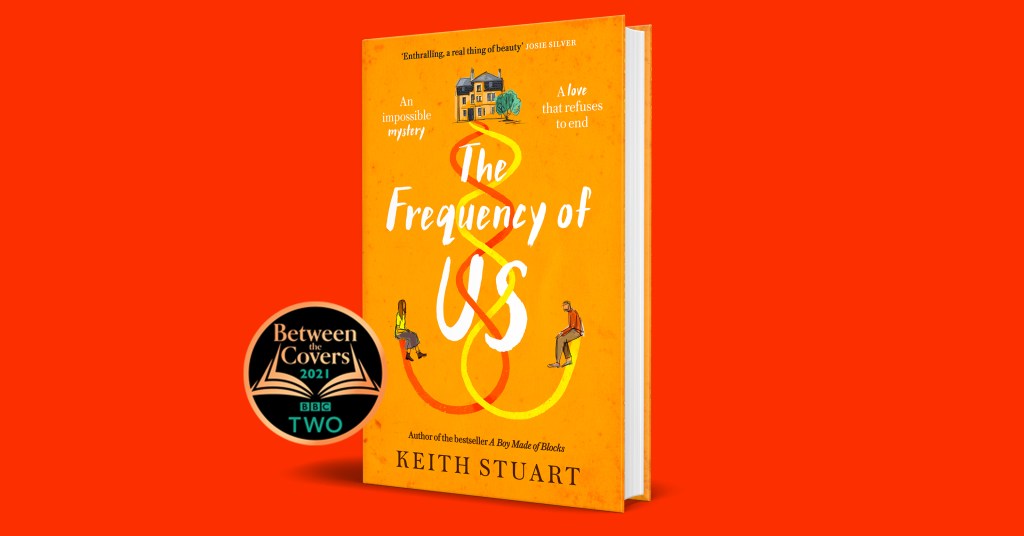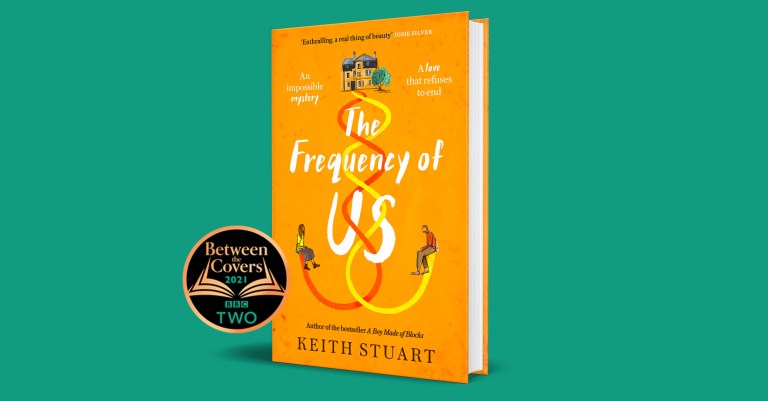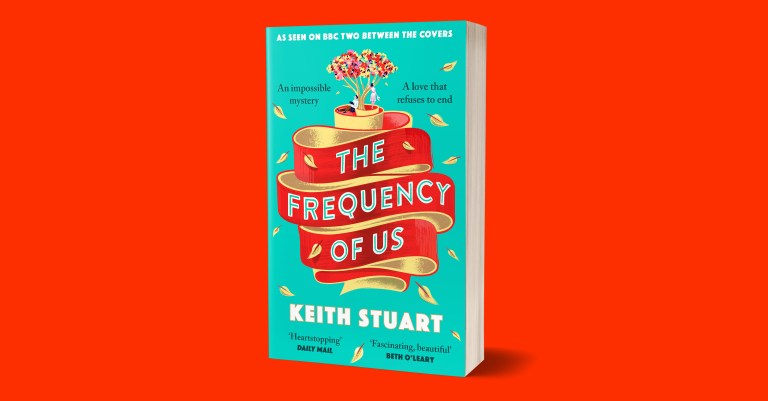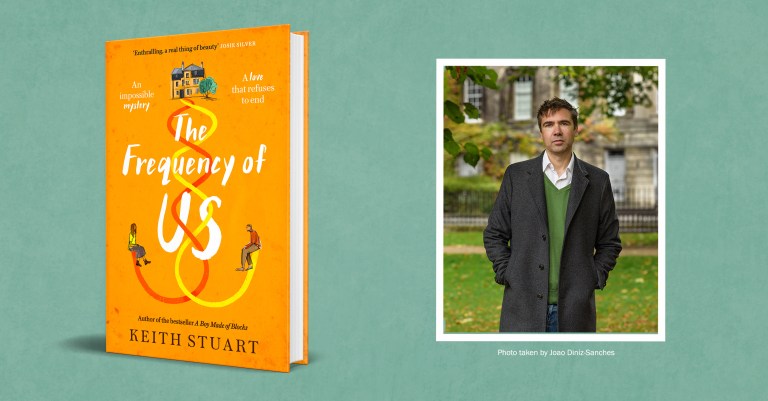The Frequency of Us: creating a character with anxiety

The Frequency of Us: creating a character with anxiety
Laura James, one of the two lead characters in The Frequency of Us, suffers from anxiety and panic attacks. It’s something you find out about her almost immediately, when she first turns up on the doorstep of pensioner Will Emerson, to assess his health for social services. She is a home carer, but it’s not really what she wants to do. At 29, she’s back living with her mother in Bath after suffering a serious panic episode in London. She’s a very vulnerable character, but at this stage we don’t really know why – we just know her mother got her this job to try and help her recover some independence.
As the story of Laura’s relationship with Will continues, the book reveals a little more of her background, and about her relationship with anxiety. We also discover that she has suddenly stopped taking the antidepressants prescribed to her by her GP. When she starts to have odd experiences in Will’s home, she is uncertain whether she is suffering withdrawal symptoms, or whether there is something uncanny in the house.
This was a part of the story – and Laura’s character – that I was desperate to get right. Anxiety is something a lot of people have experience of, so it was crucial that her emotions and vulnerability, and her use of antidepressants, rang true. So I did a lot of research. I spoke to several friends who have lived with anxiety, I also spent many hours on anxiety and depression forums, learning how people talk about the conditions, and how panic attacks manifest themselves. I also researched the withdrawal effects of modern antidepressants, especially selective serotonin reuptake inhibitors (SSRI), which are commonly prescribed to patients with anxiety and panic disorders. Symptoms can include dizziness, exhaustion and even auditory and visual disturbances – all of which Laura experiences. Or at least seems to. I was really careful not to write a novel that seemed critical of medication for mental health – it’s clear Laura isn’t being responsible with the drugs, and there are several scenes of her visiting her GP who is sympathetic. I also wanted to maintain ambiguity – just as we’re not sure if Will is suffering from dementia, we’re also not sure about Laura’s state of mind – and this ambiguity is really central to the story. Are the two characters uncovering the mystery of Will’s wife’s disappearance during the war, or are they two people with mental health conditions, making each other feel worse?
But some of the key elements of Laura’s character and anxiety come from my own experiences. While writing the novel, I started to come to terms with my own anxiety – throughout my career as a journalist and writer I’ve often struggled with stress, and I think that bringing Laura to life as a character helped me to understand how central stress had become in my own life. So just like her, I saw my GP and was prescribed antidepressants. There are moments in Frequency of Us that definitely come straight from me – the way Laura describes her feelings of dread at the start of each day, and the way she finds it difficult to organise herself through the fog of anxiety. But she’s also very different to me, and of course, her experiences as a woman with anxiety, especially when she moves to London, alone and suffering mental health issues, are things that I’ve had to construct from the experiences of other people. I think this is a really important part of the writing process: actually researching your character as a thinking, feeling person, rather than a list of stats.
To create authentic characters, you need authentic experiences to draw from – listening to people who have led similar lives to your characters can give you the spark of truth and authenticity that would otherwise be lacking. Believable characters are all about little moments of behaviours, little images, little idiosyncrasies. I’m reading Luster by Raven Leilani right now and it’s a masterclass on revealing a true character though the minutest details.
Laura is a troubled lonely character who finds it difficult to let people in. That’s a tough call for a novel as readers tend to want to connect with lead characters. When a friend of mine read The Frequency of Us, she said to me “I liked Laura, I was rooting for her, but I didn’t love her”. This was actually something I was striving for – it wouldn’t have been authentic if Laura had been immediately likeable to readers, because that’s not who she is – she is distant and aloof and I needed to make that clear without completely alienating everyone! I hope I’ve achieved that through the fact that Laura grows as a character through the book. Even if she’s difficult to love, she is not difficult to get behind because she’s striving to make a difference in Will’s life, she is willing to fight for him, even if everyone else thinks she’s wrong.
That was the major lesson I learned while writing The Frequency of Us: it’s okay to have difficult, unsympathetic lead characters as long as they’re doing something, as long as their growing and challenging themselves, because that’s something we can all get behind. In the end, I think, what we as readers want from authentic characters isn’t necessarily likeability, it’s change.
*** A BBC2 BETWEEN THE COVERS BOOK CLUB PICK ***
*** BBC RADIO 4 BOOK AT BEDTIME ***
'A fascinating, beautiful, heartwarming novel. It kept me gripped from the very first chapter' -- BETH O'LEARY
In Second World War Bath, young, naïve wireless engineer Will meets Austrian refugee Elsa Klein: she is sophisticated, witty and worldly, and at last his life seems to make sense . . . until, soon after, the newly married couple's home is bombed, and Will awakes from the wreckage to find himself alone.
No one has heard of Elsa Klein. They say he was never married.
Seventy years later, social worker Laura is battling her way out of depression and off medication. Her new case is a strange, isolated old man whose house hasn't changed since the war. A man who insists his wife vanished many, many years before. Everyone thinks he's suffering dementia. But Laura begins to suspect otherwise . . .
From Keith Stuart, author of the much-loved Richard & Judy bestseller A Boy Made of Blocks, comes a stunning, emotional novel about an impossible mystery and a true love that refuses to die.
'Enthralling, a real thing of beauty. Dazzling' -- JOSIE SILVER
'The Frequency of Us is a novel with a bit of everything: a sweeping love story, wonderfully complex characters, and a sprinkling of the supernatural. I loved it, and know it'll stay with me for some time' -- CLARE POOLEY
'A complete joy! An intelligent, intricate and emotive mystery' -- LOUISE JENSON







